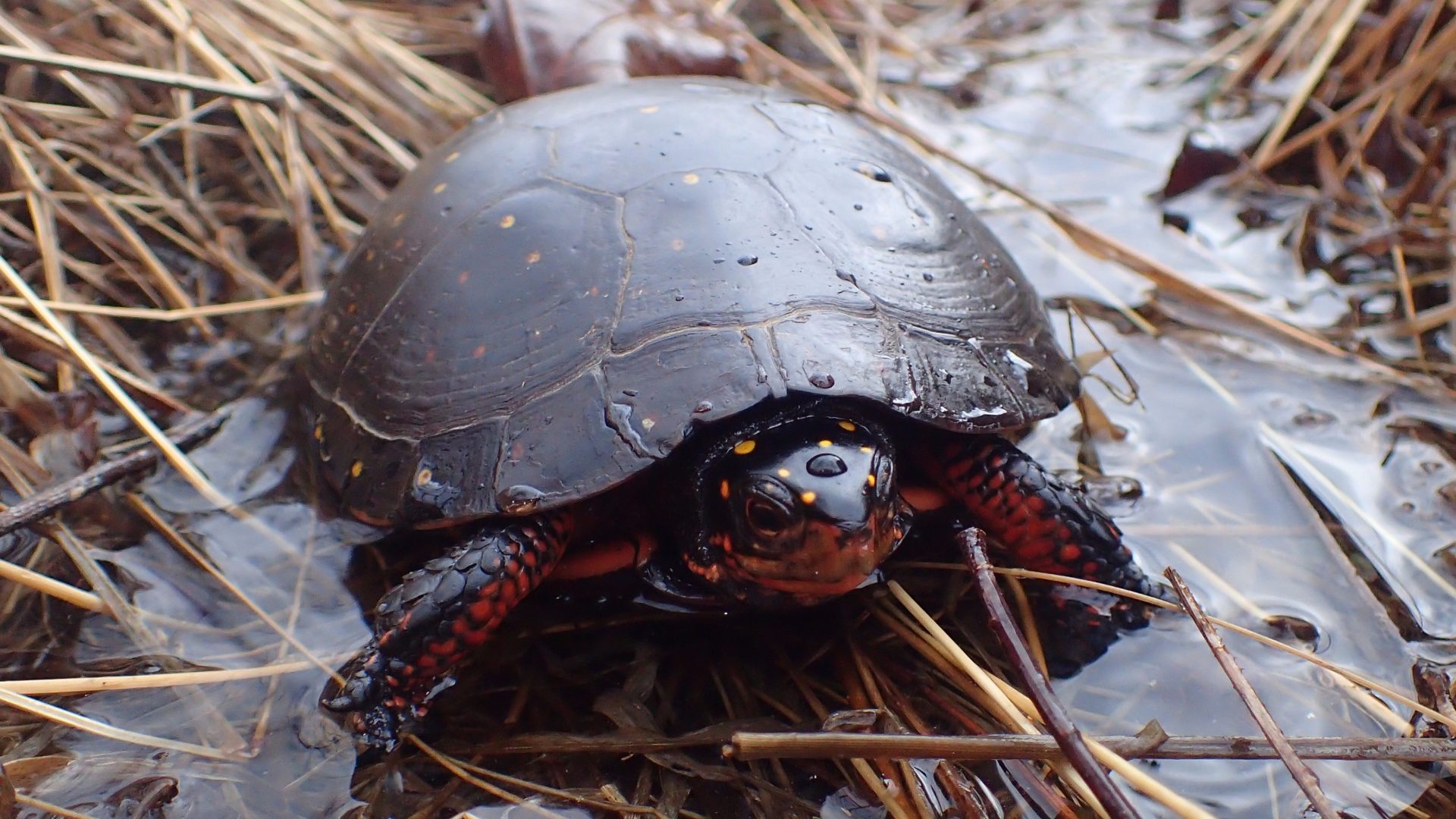Spotted turtles are West Virginia’s smallest and rarest turtle species. Populations of this small turtle are in decline because the emergent wetlands they rely on are disappearing, and they are being illegally collected for the pet trade.
Biologists with the West Virginia Division of Natural Resources are monitoring the few remaining spotted turtle populations left in the state to try and save this beautiful and charismatic turtle. Check out the photos to learn more about DNR’s efforts to save the spotted turtle in West Virginia.
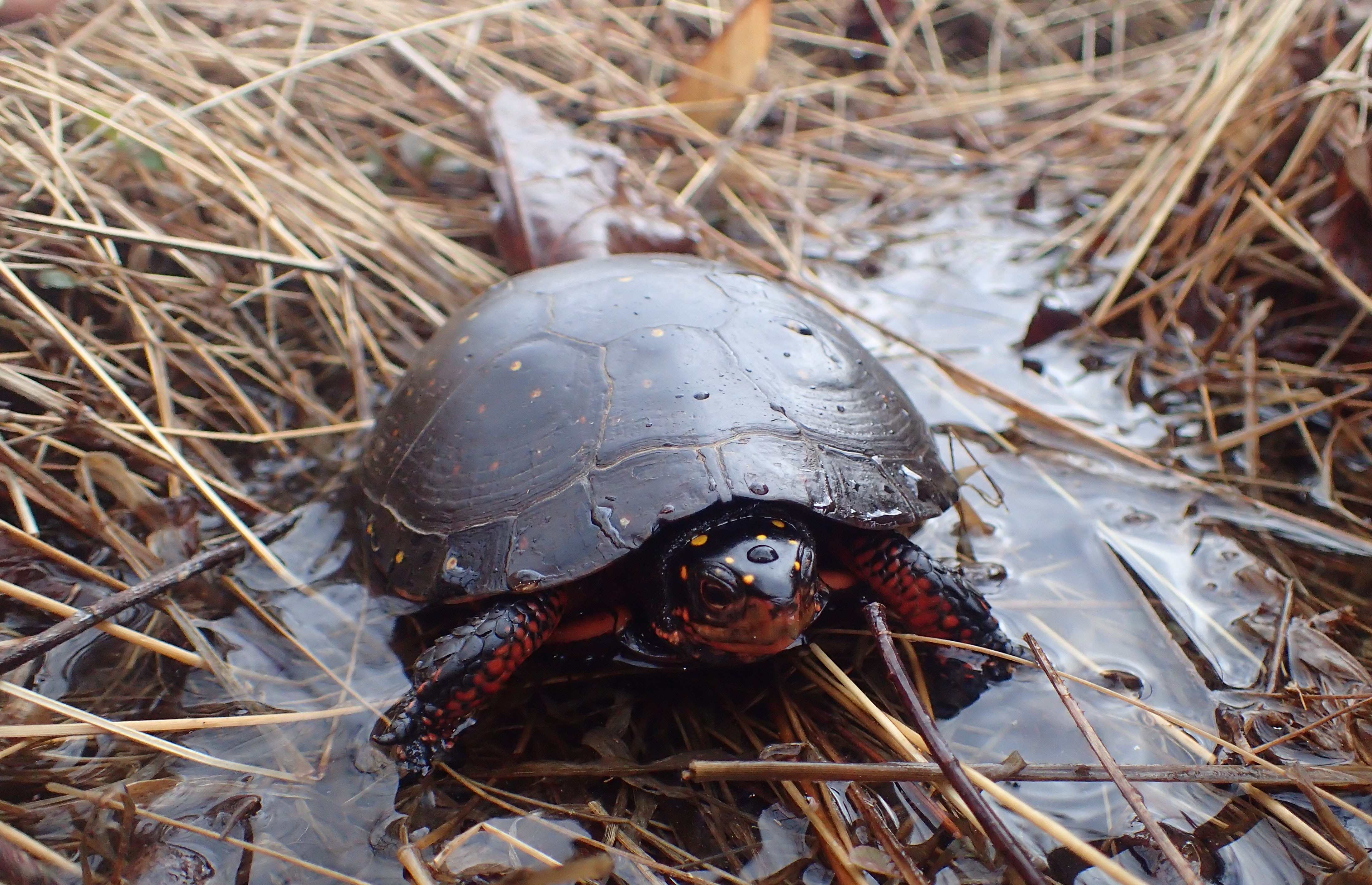
Photo courtesy of Kevin Oxenrider (WV DNR)
Aptly named for the yellow spots that cover the turtle’s head, neck and shell, the spotted turtle is West Virginia’s smallest and rarest turtle species. Habitat loss, as well as illegal collection has resulted in a decline in spotted turtle populations. The species is currently under review for federal listing under the Endangered Species Act. Additionally, the spotted turtle is listed in the West Virginia State Wildlife Action Plan as a Species of Greatest Conservation Need.
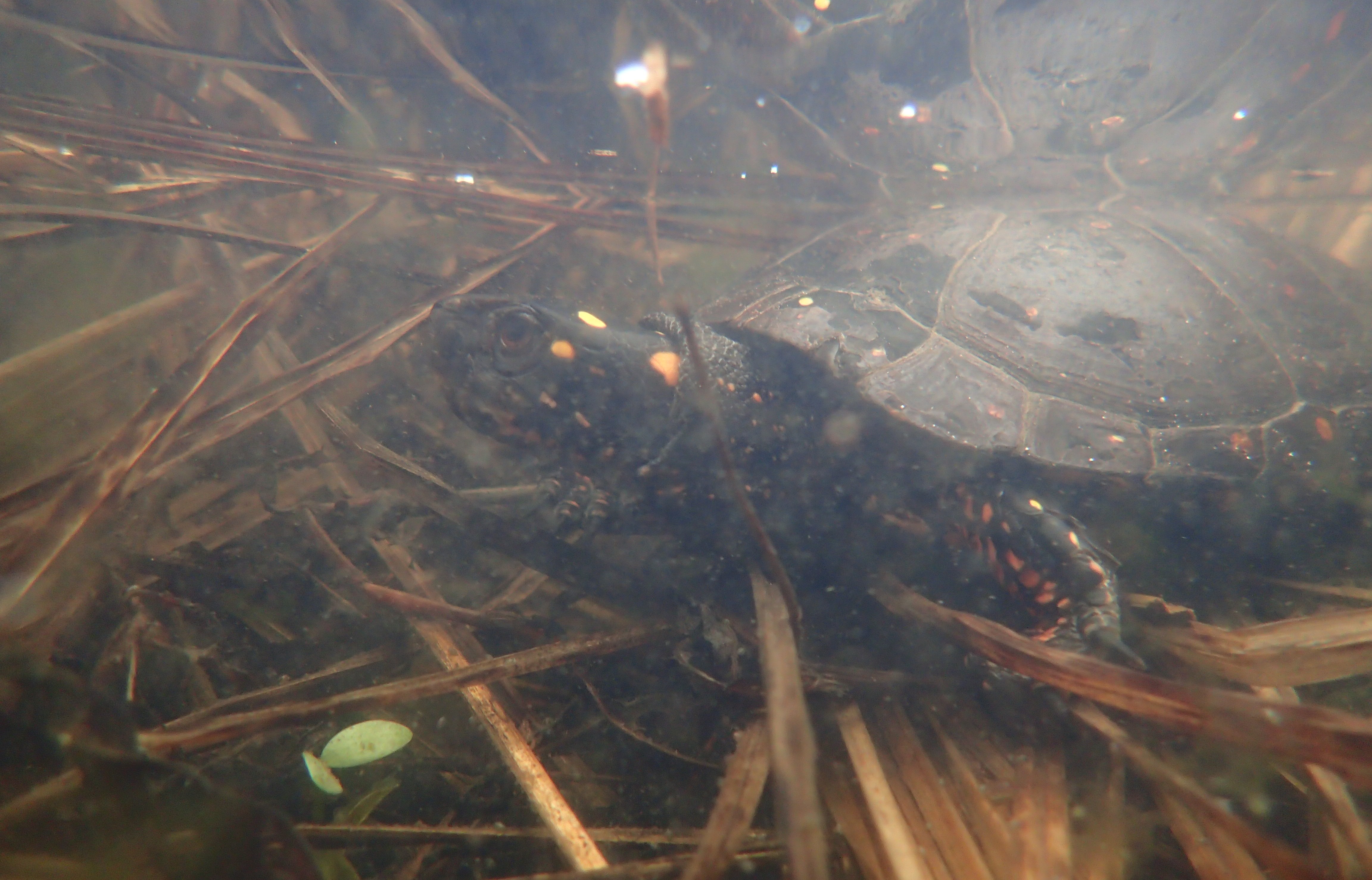
Photo courtesy of Kevin Oxenrider (WV DNR)
Spotted turtles are semi-aquatic turtles, spending equal amounts of time in both terrestrial and aquatic habitats. In the morning, it is not uncommon to see spotted turtles basking on the shoreline, logs or vegetation. However, they typically spend their time in the water during the warmer periods of the day.
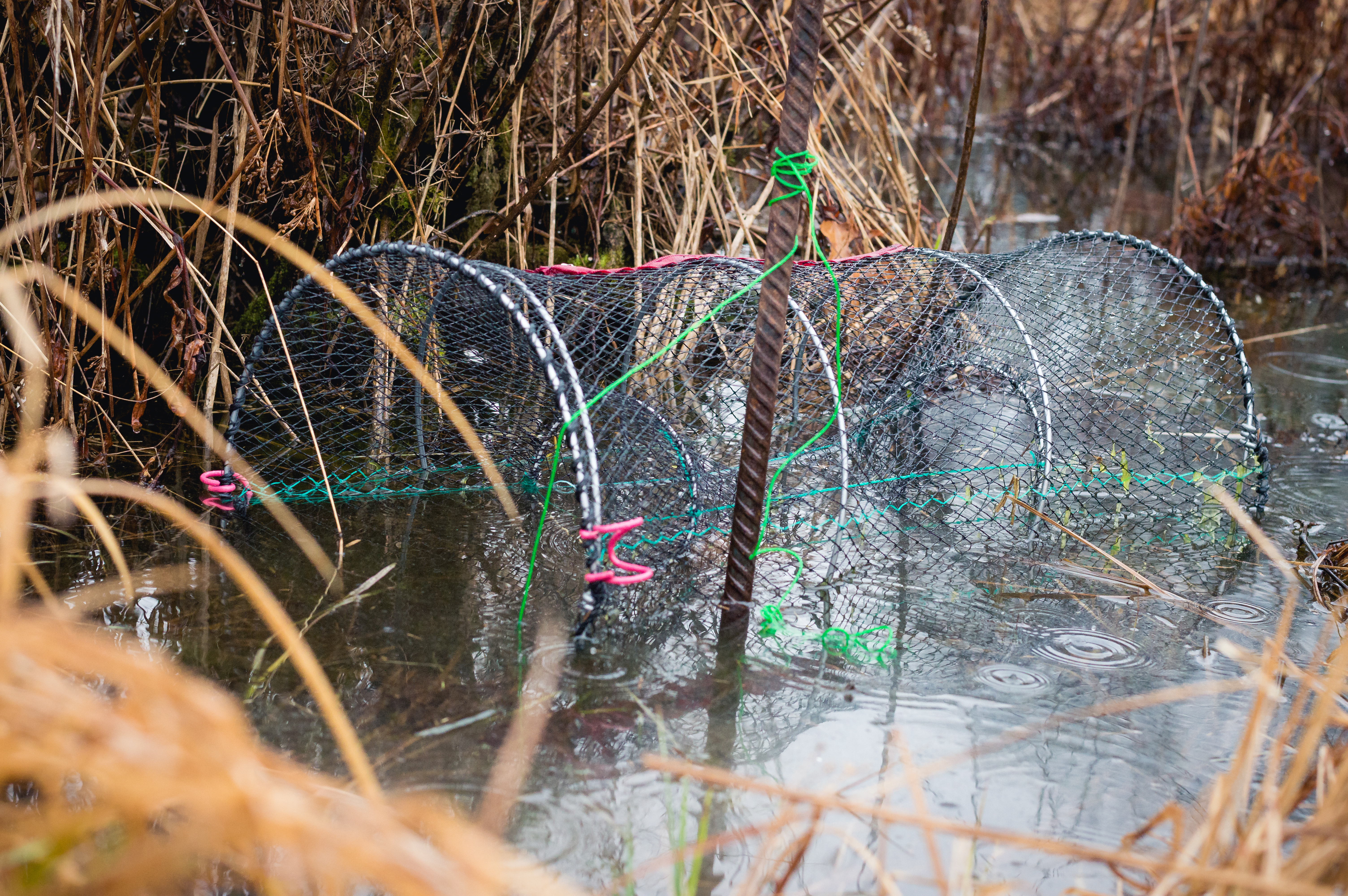
Photo courtesy of Donald Brown (WVU)
Biologists use small hoop-net style traps baited with sardines to live-capture spotted turtles. Biologists also conduct hand-capture surveys that require searching for turtles basking on the shoreline or on vegetation.
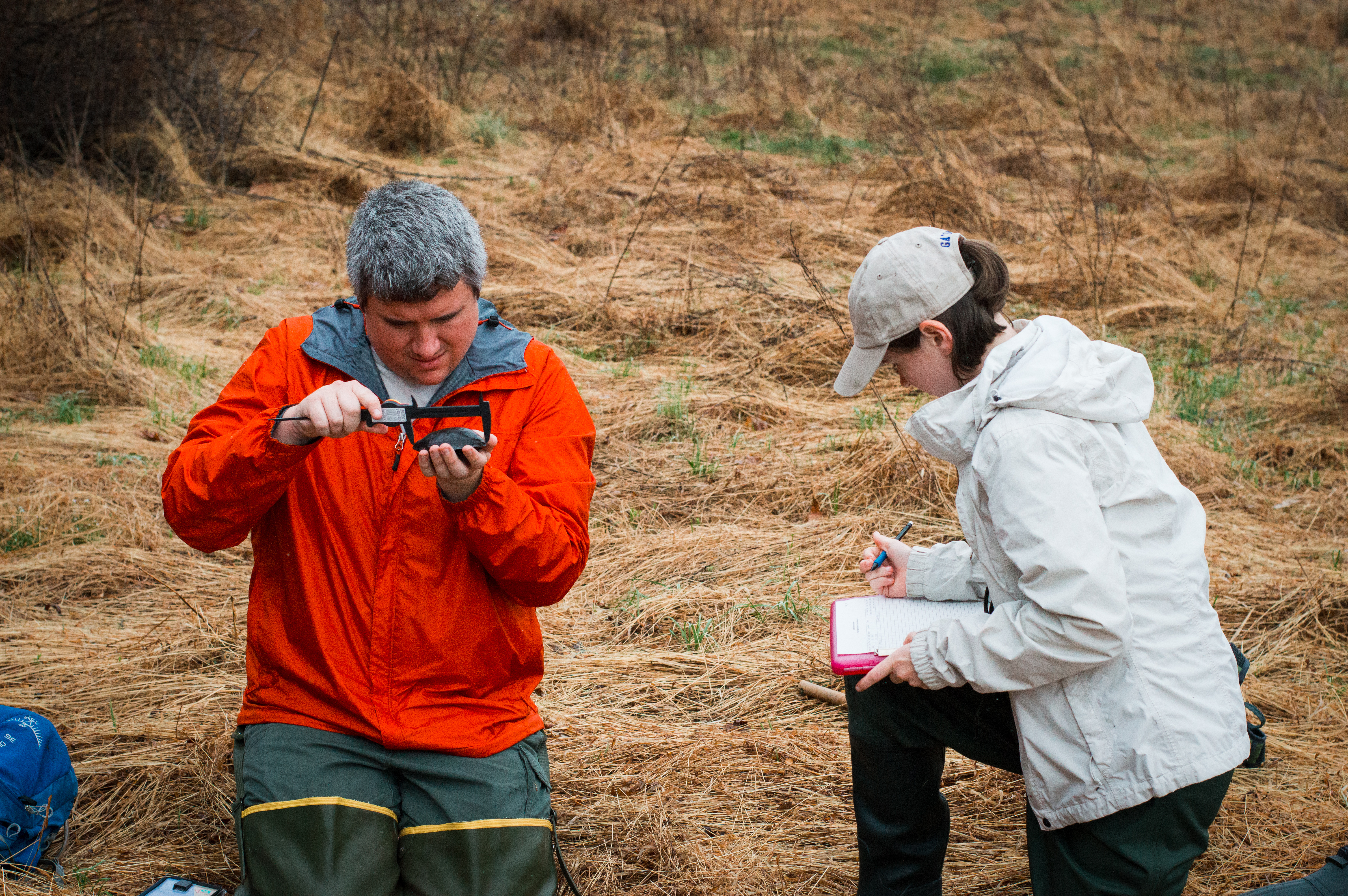
Photo courtesy of Donald Brown (WVU)
Biologists take body measurements from each captured spotted turtle to help assess the health of the turtle population. In this photo, DNR Wildlife Biologist Kevin Oxenrider, and WVU Graduate Student Alissa Gulette, collect measurement data from an adult spotted turtle. Additionally, each captured turtle is uniquely marked with a small tag embedded under the skin. When scanned with an appropriate scanning device, this tag will report a unique number that is used to determine the turtle’s identity in the future.
You can help protect spotted turtles and other vulnerable wetland species by conserving wetlands and remembering that collecting and possessing spotted turtles in West Virginia is illegal. Please report suspicious human activity in wetlands to DNR Law Enforcement. Also, be sure to report any sightings of spotted turtles to your local DNR District Office.




